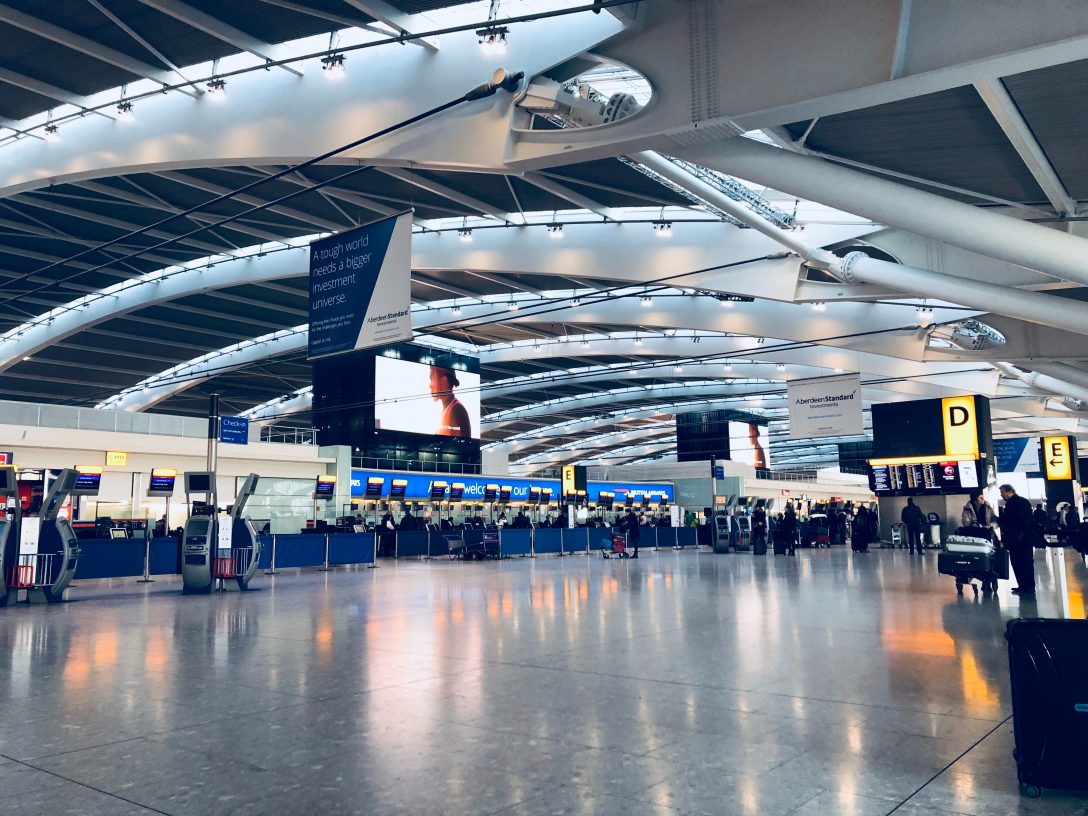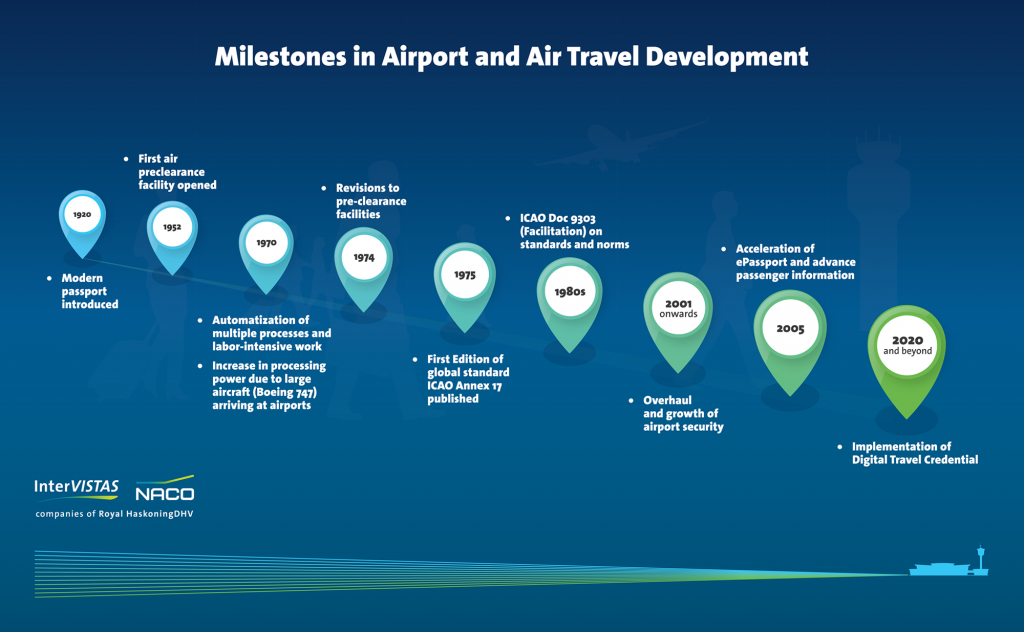
If we were to reimagine designing an airport from the start, but without documents such as the IATA Airport Development Reference Manual, FAA Airports Design and Engineering Standards and ICAO Aerodrome Design Manual, what would that structure look like? How would it be experienced – either by passengers, airline and airport employees or others using it? And, what would this mean for today’s processes implemented?
Looking back at just some of the developments in air travel that have taken place during the past 100 years, and pairing these with evolutions in the passenger journey, the change at specific inflection points provide unique insights into the importance and effects of re-imagining over the years.
While passport checks have been in existence for at least 2,500 years, modern day passport control at airports was only instituted after the First World War and introduced one of the first official ‘checkpoints’ in the passenger journey. From increased automation and mechanized baggage handling during the late 60s with the arrival of the jumbo passenger liner, to the launch, overhaul and growth in airport security protocols from 1972 up to the present day, the very shape and prominence of airports has shifted dramatically as a result.

The importance and relevance of these developments extend far beyond those noted here however.
As airports were constructed, the variety of concepts in place that focused on how passengers would journey through airports, lay in stark contrast to the realities even 10 years later. The incorporation of retail models, additional premium passenger lounges and the growth in air traffic have all contributed to changes in the nature and number of needs to be met for larger airports. For passengers, the need to bridge ever-longer walking distances has become a reality.
These sequential developments – from the operational and passenger perspectives – have made today’s airports a patchwork of facilities, with separate terminal building facilities glued and made to work together in a single unit, often against the original design intentions. And this too, has implications for structures with lifecycles of 60+ years which in parallel must continue to evolve over time.
With hindsight, it is apparent that airports now require designs that offer flexibility in the building envelope – an adaptable ‘box’ allowing for the constant change, merging and shifting of walls, partitions, as well as passenger flows and processes within the structure.
As we observe the current reshaping of airport standards and processes in response to the Covid-19 pandemic, airports as we know and recognise them today, will be entering the next evolution in design, operation and perhaps, above all, security.
People, (staffing), processes (passenger checkpoints), technology, and space will all be influenced by these shifts. It is for this reason, that we must pay closer attention to and indeed scrutinize how we deal with all passenger flows.
At the same time, we must also keep top of mind that the choices we make in terms of airport design, will inevitably have consequences that extend far beyond the lifecycle of the airport and deep into the safety, security and privacy of those who use them.
JOIN SOLOMON ON 23 SEPTEMBER WHERE HE’LL BE SHARING HIS VIEWS AND PRACTICAL INSIGHTS ON THE SHAPE AND FUTURE OF AIR TRAVEL: HOW CAN WE FURTHER ADOPT AUTOMATED DIGITAL SOLUTIONS TO HELP THE INDUSTRY RECOVERY?
Wednesday, September 23, 2020 14:15 -15:00 BST on the Keynote Channel
Contact Us
Ready to get started? Let’s work together on finding solutions that work for you. Get in touch and let us know how we can help!
Contact Us
